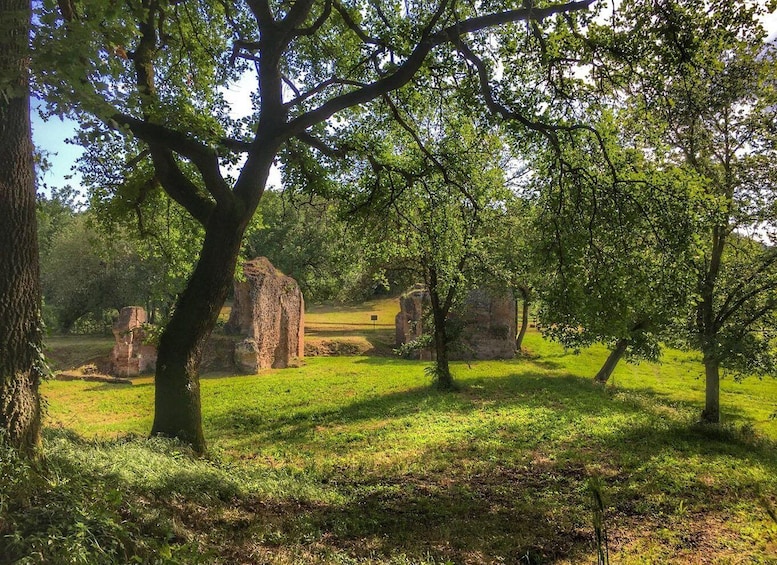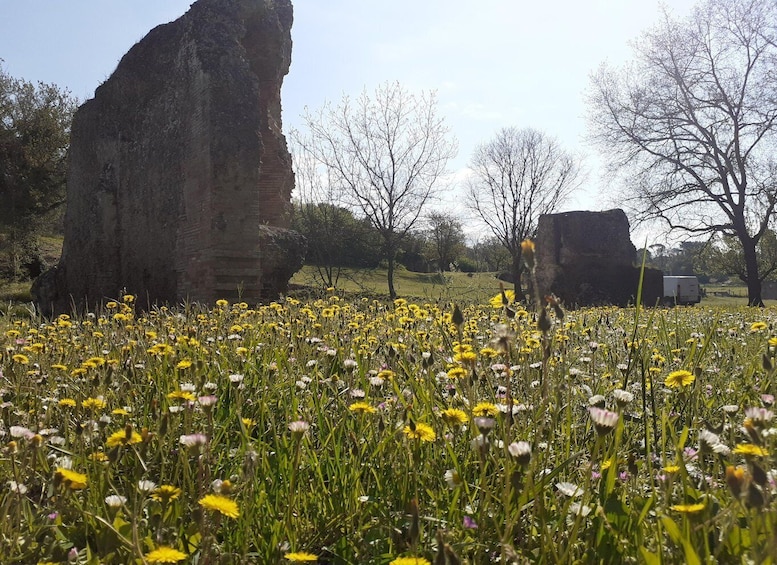Ocriculum, from a small Umbrian center, became an important Roman municipium in the 3rd century B.C. inscribed in the VI Regio. Its wealth depended on the presence of the port and the crossing of the Via Flaminia. The city probably extended over 36 hectares. Remains of the Roman municipium include the remains of the theater, amphitheater, large buildings, nymphaeums, large funerary monuments, and a well-preserved section of the ancient Via Flaminia.
The ancient center of Ocriculum, at 36 km in extent, represents one of the most flourishing Roman-era municipalities in the Region of Umbria. The area is set within an extremely fascinating naturalistic context, located along the banks of the Tiber River. We can only imagine, through the observation of its vestiges, the wealth and importance that this city held; through a real excursion, immersed among the monuments of history and unspoiled vegetation, we can retrace the events that led to its discovery, reconstruct the various historical phases of the municipality and imagine what this flourishing center must have been like during the Imperial Age.




